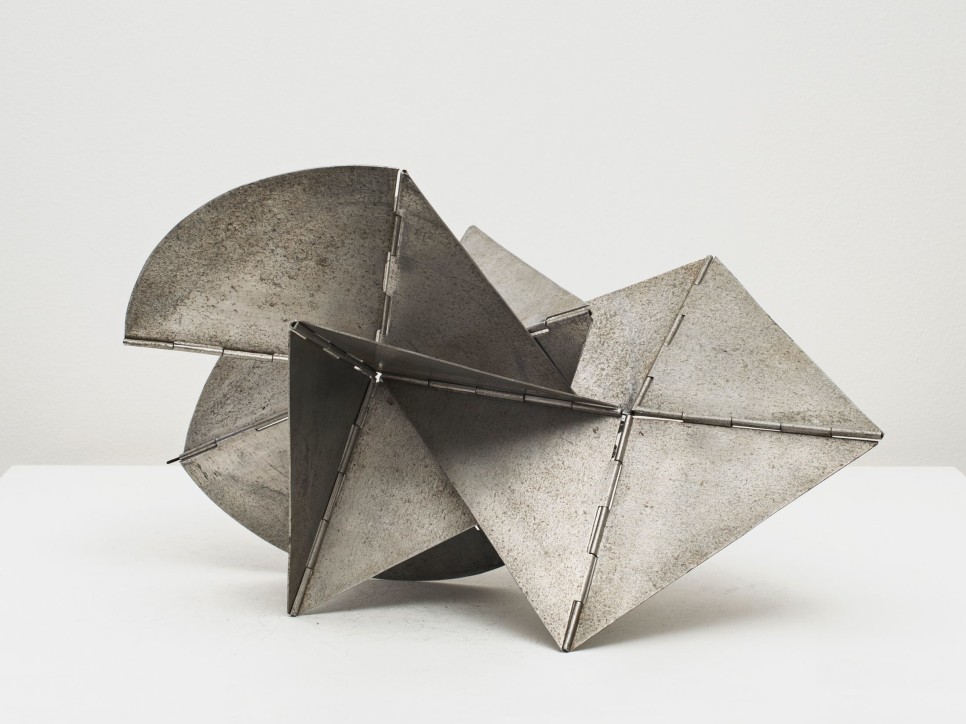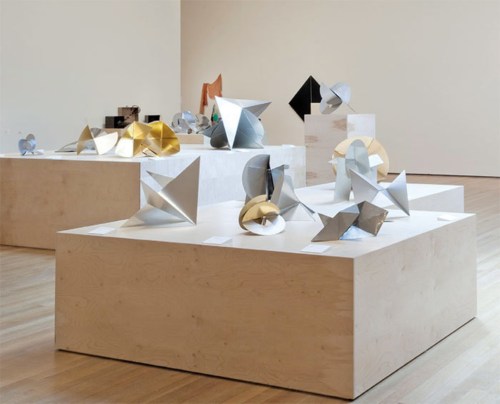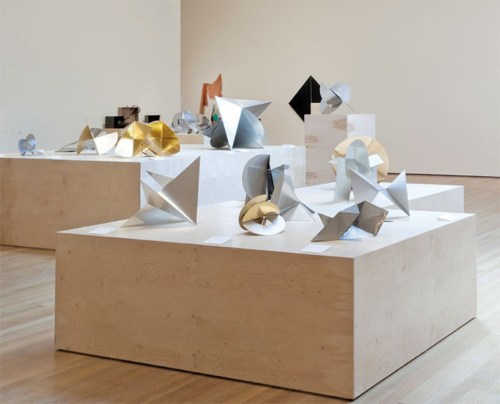

View of “Lygia Clark: The Abandonment of Art, 1948–1988,” 2014. Works from the series “Bichos” (Beasts), 1960–66. Photo: Thomas Griesel.
WHEN ONE OF YOUR HANDS touches the other, something peculiar happens: You become aware of the strange ambivalence that makes your body different from all other things. Your hand is an object in the world, but it is also something you experience from within. And the hand you touch is also both an object and a feeling, sensing part of your embodied self. The touched thing is also touching. This ambiguity of corporeal life—of the active/passive, inside/outside, subject/object—is what phenomenologist Maurice Merleau-Ponty spent his life trying to elucidate, and in the late 1950s, Brazilian art critic Mario Pedrosa introduced the Neo-concretist artists in Rio de Janeiro to the French philosopher’s thinking. Lygia Clark, still a painter exploring the possibilities of geometric abstraction in series as exquisite as anything by Kazimir Malevich, would have been among this circle in Rio, and it is clear that her art participates in a conversation that involves philosophy, psychoanalysis, and other speculative fields developed during the period. These ideas pushed her work beyond the painterly surface into sculpture and the visceral realm, and finally into an interrogation of the energies produced by a multiplicity of bodies sharing a space. They also pushed her beyond art.
Take, for example, Clark’s 1966 “proposition” Diálogo de mãos (Dialogue of Hands), a band connecting two hands and forming a Möbius strip—that simple yet philosophically puzzling ribbon that has only one side, turning inside into outside and vice versa. In the most famous image of this work, the connected wrists belong to Clark and her ally Hélio Oiticica. He is so close, and yet infinitely remote. This is the paradox of proximity and distance explored by phenomenology: Touching your own hand, you realize that you will forever remain other to yourself. Touching someone else’s hand and realizing that it is part of another person, someone like you but not you, is an intricate act of intentionality that philosopher Edmund Husserl called pairing. This incarnated and continually divided intersubjectivity is what Clark would most fully explore in the ’70s in her corpo coletivo (collective body) experiments—events that, perhaps, were no longer meant as artworks. How did she get to this point?
Read full article at artforum.com

